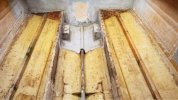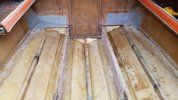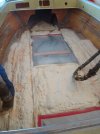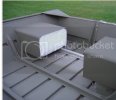BarkleySounder
Well-Known Member
Hello,
I have a 1977 Double Eagle 206 I'm at the stage where I need to decide to foam under the floor or not.
When I pulled it up the foam was soaking wet. It was all taken out, and now I'm trying to figure out if it's worthwhile putting back in. I'm sure it's been discussed before but I haven't had luck finding the thread's.
Any input is appreciated!
Pictures attached of current floor state.
I have a 1977 Double Eagle 206 I'm at the stage where I need to decide to foam under the floor or not.
When I pulled it up the foam was soaking wet. It was all taken out, and now I'm trying to figure out if it's worthwhile putting back in. I'm sure it's been discussed before but I haven't had luck finding the thread's.
Any input is appreciated!
Pictures attached of current floor state.







